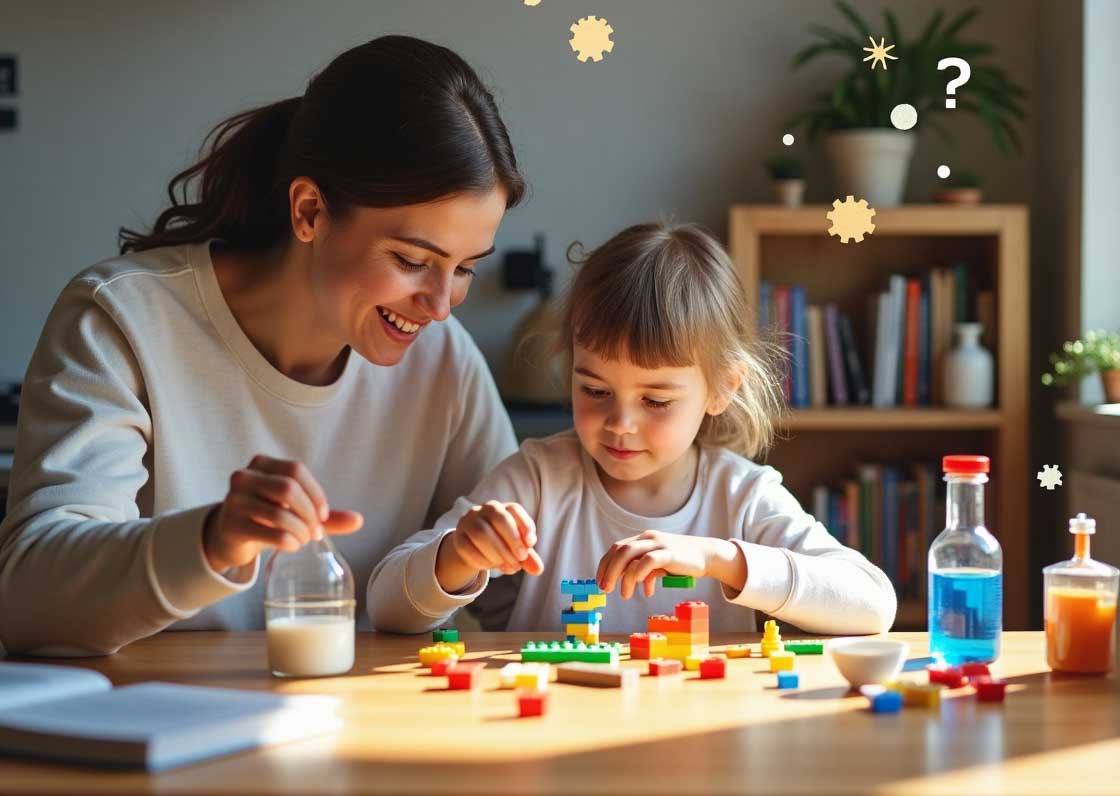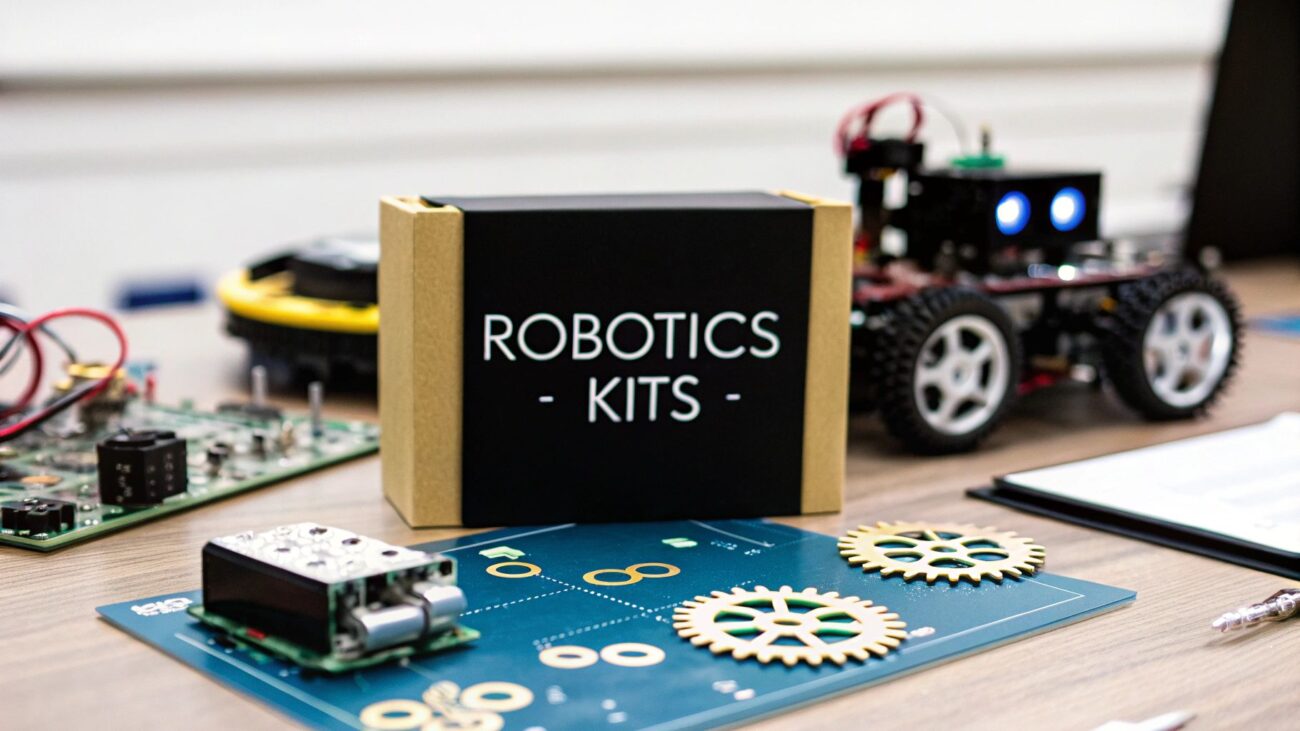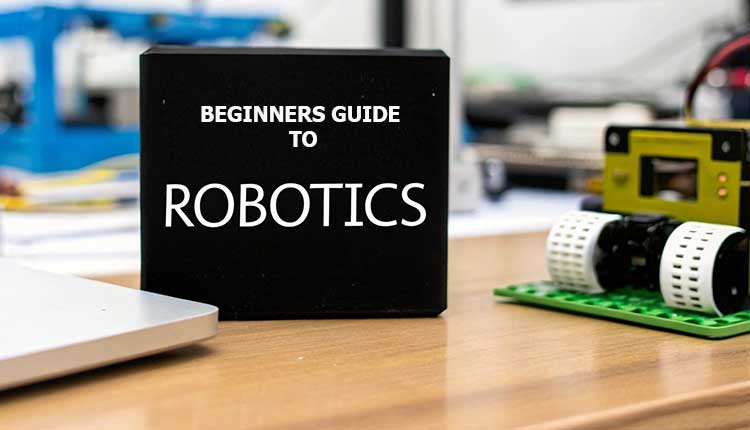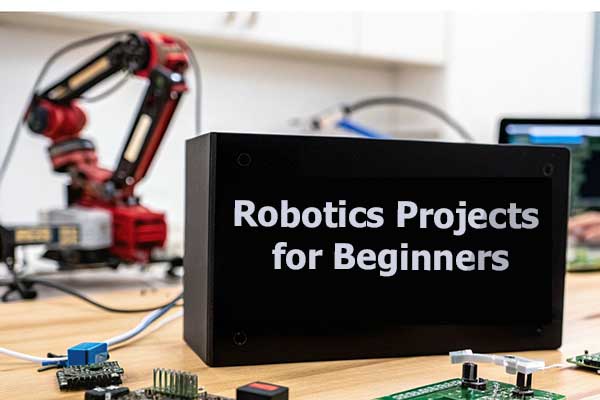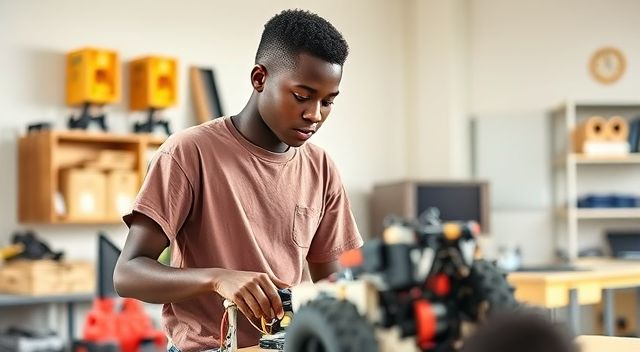
Blog and Tutorials
10 Fun and Easy STEM Activities for Kids to Try at Home or in the Classroom

Curiosity has always been a powerful spark in a child’s learning journey. When hands-on experiments and interactive learning meet inquisitive minds, exciting things unfold. STEM activities (science, technology, engineering, mathematics) turn the simple into the extraordinary, helping kids connect concepts to the real world, build problem‑solving skills, and kindle a lifelong love for discovery.
If you’re an educator, parent, or caregiver looking for ways to turn everyday moments into learning opportunities, you’ll find that inspiring young learners with creative STEM projects using household items doesn’t have to involve expensive kits or complicated setups. Most engineering and STEM projects can start with everyday household items or simple classroom supplies. The most important element? An environment where creativity flourishes and children feel safe to test, tinker, and try again.
Ready to ignite excitement and boost STEM confidence? Discover local makerspaces and coding hubs in Africa, here are ten activities guaranteed to stretch minds, provide fun challenges, and spark smiles—at home, in a classroom, or anywhere curiosity gathers.
Table of Contents
Build a Marshmallow Tower
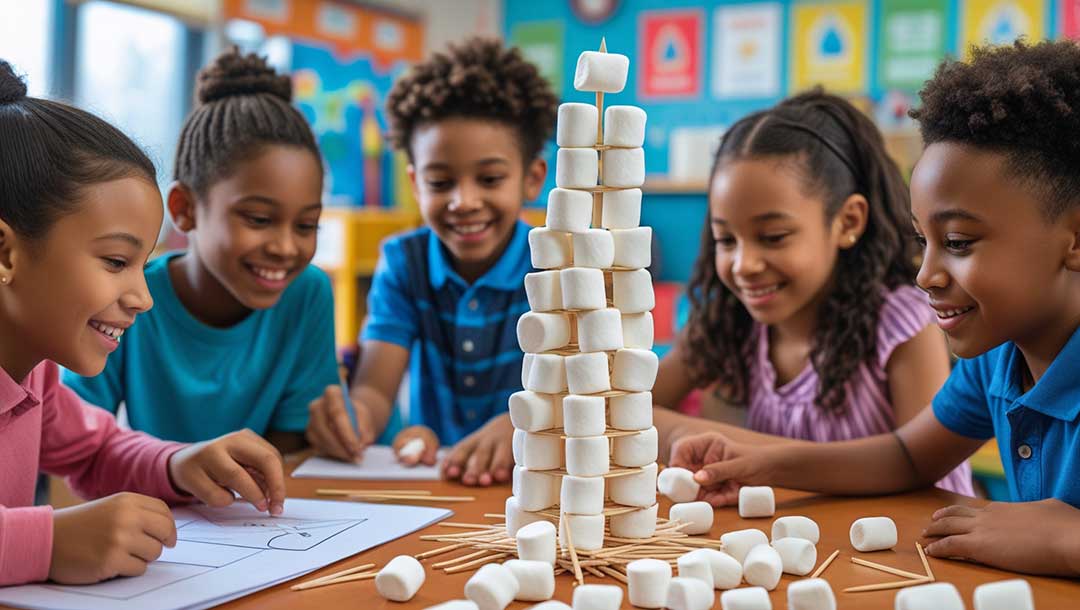
A pack of marshmallows and some toothpicks are all you need to introduce design, architecture, engineering, and STEM teamwork. Challenge kids to build the tallest or strongest tower they can. As they experiment with shapes and structures, they’ll quickly see why triangles provide stability and why wide bases help tall towers stay upright, and through these experiments, their understanding will deepen. Encourage them to draw out a plan before building, make revisions, and test how much weight their tower can hold.
This activity supports:
- Spatial awareness
- Engineering design process
- Team collaboration
Incorporating elements of play and creativity, STEM activities for kids, such as building a marshmallow tower, demonstrate how simple materials can transform into dynamic learning experiences that nurture engineering principles and design thinking. Through the hands-on construction process, children discover the balance between structural stability and height, engaging in problem-solving as they iterate on their designs and refine their construction techniques. This type of activity not only fosters spatial awareness and teamwork but also instills the confidence to explore solutions, ultimately igniting a passionate curiosity for future STEM pursuits.
DIY Lava Lamps
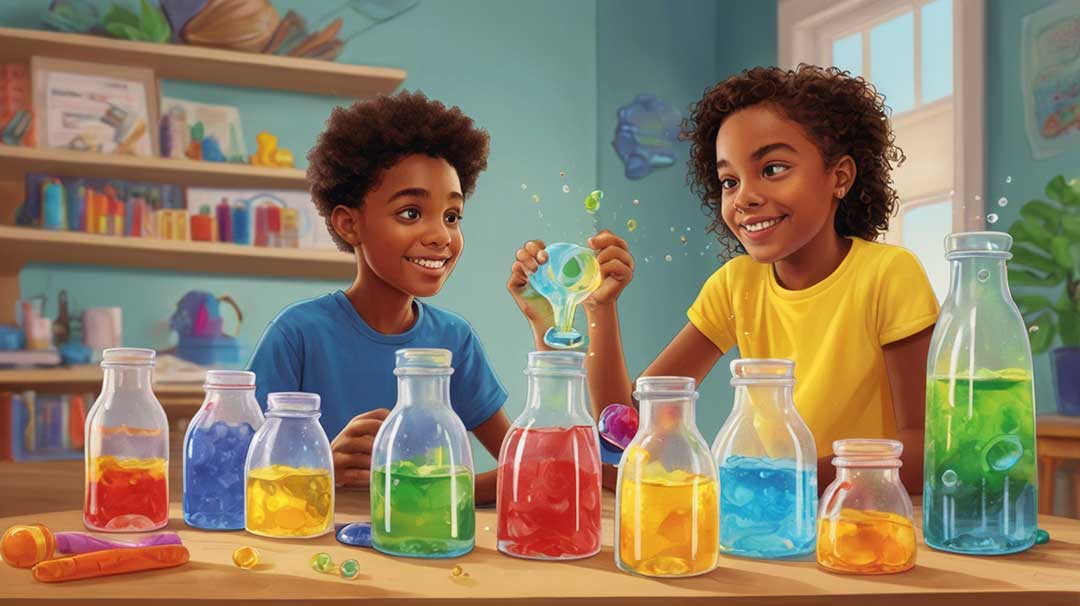
With just a water bottle, vegetable oil, water, food coloring, and an antacid tablet, kids can create a colorful “lava lamp.” Pour oil into the bottle, add colored water, then drop in a tablet and watch the bubbles rise and fall. Young scientists will witness density in action and start to grasp the concept of immiscible liquids, highlighting how foundational science principles are observable in everyday experiments.
A simple twist: Ask kids what happens if you change the amount of oil or water, or use different tablets. Guide them to make predictions and record their observations like real researchers.
STEM Scavenger Hunt
Turn a walk around the house, yard, or classroom into an adventure with educational games by discovering how electricity and magnetism are used in everyday life. Give kids a list of STEM-themed objects or phenomena to spot—magnets, something transparent, a lever, a patterned object, or evidence of weathering. Let them take photos, draw, or describe what they find.
Sample scavenger list:
- Something that reflects light
- A machine with gears
- A ramp or inclined plane
- An object that uses a battery
- Proof of erosion
Scavenger hunts build observation skills and help make connections between the STEM world and everyday life.
Egg Drop Challenge
Few activities combine suspense and anticipation like the classic egg drop. The task is deceptively simple: protect a raw egg from a high fall using limited materials. Kids might reach for straws, string, bubble wrap, or recycled packaging. Through iterations and unexpected failures, they’ll discover physics principles in action—impact force, cushioning, and aerodynamics.
Tips for success:
- Set size or material limits to encourage creative solutions
- Test and redesign as a group
- Discuss why some designs worked while others didn’t
Paper Airplane Races
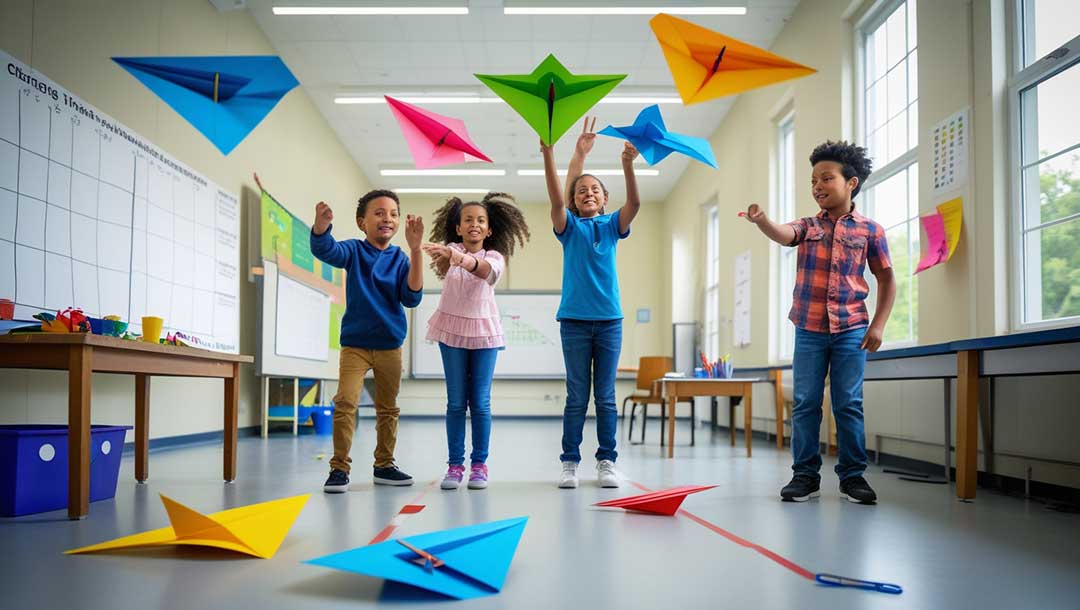
Engineering and physics take flight with this ever-popular competition, offering interactive projects, educational games, and fun challenges for participants. Offer kids a variety of paper and challenge them to design airplanes for distance, speed, or unique tricks. Track results, chart changes, and talk about airflow, weight, center of gravity, and the role of magnetism in flight dynamics. Encourage designing, testing, and improving based on results, fostering creativity throughout the process.
Try variations like:
- Adding paper clips for weight
- Testing in windy vs. still rooms
- Timing flights for accuracy
Children not only refine their planes but also learn about engineering, mathematics, and science principles as they gather data, analyze, and adapt—a core skill set of STEM activities for kids.
Rainbow in a Jar
This science-meets-art activity transforms the kitchen table into a laboratory. Using sugar, water, food coloring, and patience, kids create vibrant liquid layers in a clear jar. Varying sugar concentrations change the density, so the densest liquid settles on the bottom while lighter ones hover above. It’s a hands-on lesson in density, solubility, stem processes, careful measurement, and hands-on experiments.
Step-by-step guide:
- Dissolve increasing amounts of sugar in equal volumes of water and add a different color to each.
- Carefully layer them, heaviest (most sugar) on the bottom.
- Observe the striking rainbow that results.
The magic? It all depends on the careful layering and patient pouring—scientific precision, in disguise.
Homemade Slime Chemistry
Slime-making continues to captivate kids, and it’s a direct entry point to chemistry, much like how electricity has revolutionized the world of STEM. The classic recipe uses glue, baking soda, and contact lens solution. As kids mix ingredients, they witness the science of polymers and chemical reactions. Experiment with adding glitter, food coloring, or other safe additives for sensory play and variation, and conduct experiments by altering the ingredients.
Why stop at one recipe? Encourage experimenting with proportions and design:
| Ingredient | Classic Recipe | Stretchy Variation | Fluffy Variation |
|---|---|---|---|
| White Glue | 1/2 cup | 1/2 cup | 1/2 cup |
| Baking Soda | 1/2 tsp | 1/2 tsp | 1/2 tsp |
| Contact Solution | 1 tbsp | 1 tbsp + 1 tsp | 1 tbsp |
| Shaving Cream | 0 | 0 | 3 cups |
With each batch, encourage tracking how changes affect texture, stretchiness, or bounce.
Sun Prints
This creative yet science-based project connects art with biology, UV light, and introduces a new STEM perspective. Lay objects—leaves, keys, stencils—on special sun print paper or construction paper, then expose them to sunlight. After a few minutes, remove the items and reveal a negative print where the light was blocked.
Discuss with children:
- How sunlight changes the paper’s color
- Why some materials block more light
- What this reveals about UV rays
This project teaches about photosensitivity, plant biology, and the science behind the sun’s energy in a simple, beautiful format, including how plants stem from sunlight exposure.
Coding with Everyday Objects
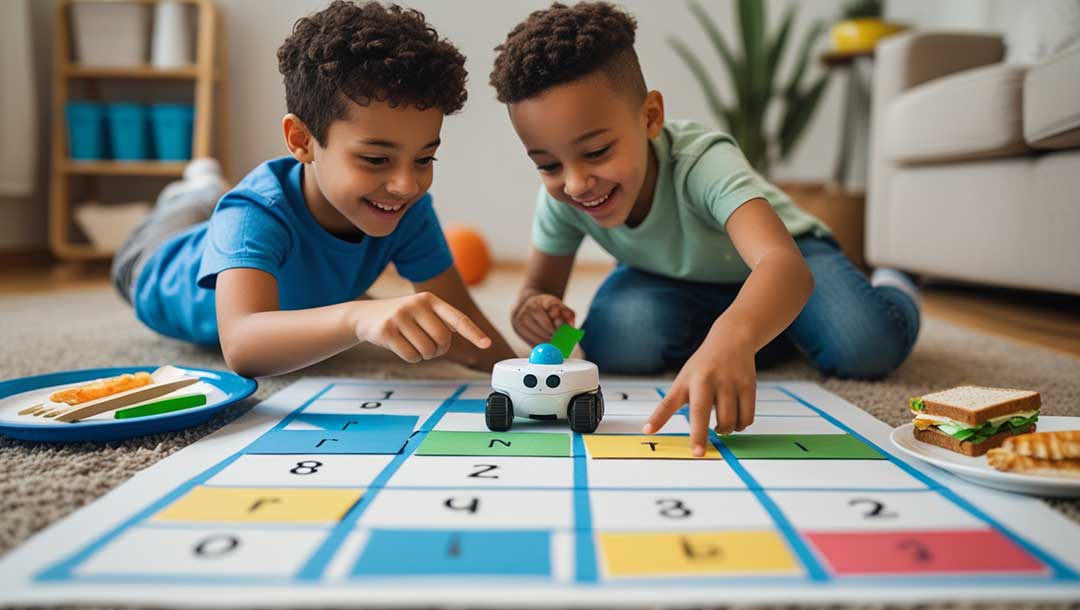
Coding doesn’t need laptops. Unplugged activities help children grasp logic and sequencing. Use a grid on paper or the floor and “program” a friend or toy to move from one spot to another with step-by-step directions—forward, turn, pick up, repeat.
Pair this with color-coded cards, story elements, or even snack time (programming someone to make a sandwich, step by step) to introduce concepts of engineering in problem-solving and design. As kids refine their “algorithms,” they sharpen logic, precise thinking, and collaborative communication, forming a strong foundation in STEM education, which includes mathematics.
Building Simple Circuits
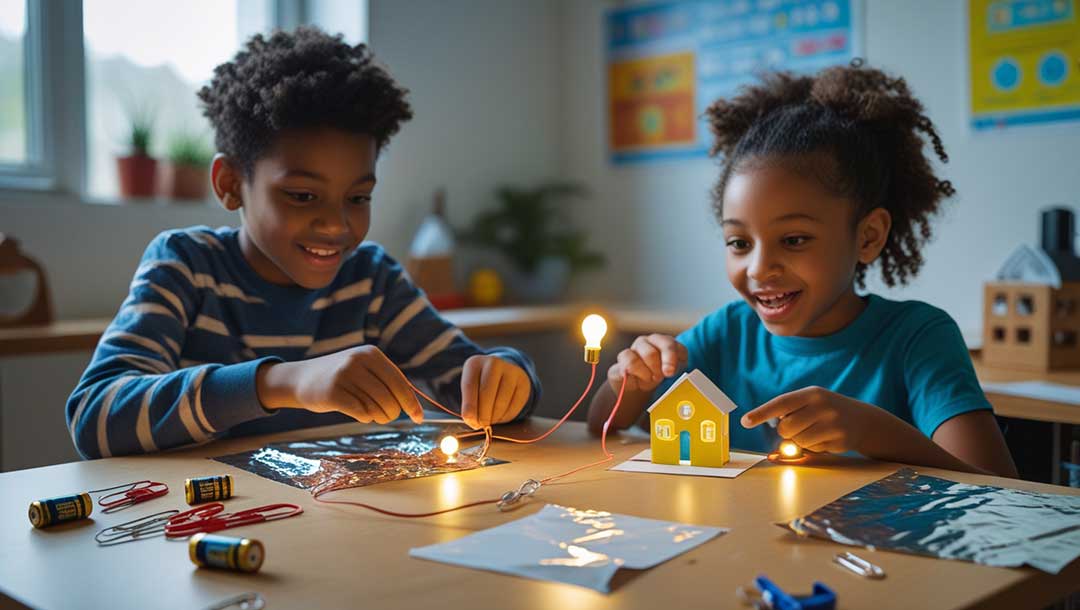
Basic circuits are surprisingly accessible. Gather batteries, small bulbs or LEDs, foil, and tape to explore how magnetism can play a role in electrical connections. Challenge kids to light the bulb using only these supplies, introducing them to the fundamental principles of electricity. Soon, they’ll piece together the concept of closed circuits, conductors, and insulators.
Expand the activity by encouraging:
- Series vs. parallel circuits
- Creating switch mechanisms with paper clips
- Lighting up a small toy house or greeting card
A sense of accomplishment lights up their faces right along with the bulbs.
Tailoring Activities by Age and Ability
Every child brings a unique set of strengths, interests, and needs. Adjust projects up or down in complexity to suit your audience. Younger kids may spend more time on sensory experiences or simple observation, while older students can dive into data collection, hypothesis writing, or researching “why it worked.”
A simple framework can help:
| Age/Level | Suggested Projects | Focus Areas |
|---|---|---|
| Preschool (3-5) | Slime, sun prints, scavenger hunt | Senses, shapes, simple cause and effect |
| Elementary (6-10) | Marshmallow towers, egg drop, air planes | Experimenting, testing, redesigning |
| Tweens (11-13) | Lava lamps, circuits, layered liquids | Measure, record, connect with real-world STEM |
Let children lead with their own questions and discoveries through hands-on experiments. Their engagement grows stronger when projects build on their natural interests, especially including exciting interactive projects like educational games and STEM activities for kids.
Creating a STEM-Rich Environment
Making STEM learning a regular part of life doesn’t require expensive resources or a high-tech lab. Often, it grows from curiosity, encouragement, and a willingness to try new things—even when they (or we) don’t have all the answers right away.
Keep a box of recyclables and craft supplies handy to inspire creativity in project designs. Invite children to come up with their own engineering challenges or improvements. Celebrate failed attempts as learning opportunities and important steps toward better solutions.
Each project, no matter the outcome, builds confidence and skills. When minds are free to wonder and experiment, science and discovery become joyful parts of everyday life.
FAQ for STEM Activities for Kids
Engaging in STEM activities at a young age fosters curiosity, creativity, and essential problem-solving skills. Below are some frequently asked questions that might guide you through introducing fun and educational STEM activities for kids, both at home and in the classroom.
What are easy STEM activities for kids?
Some easy STEM activities include building a marshmallow tower, creating DIY lava lamps, and designing paper airplanes. These activities use common household items and engage children’s curiosity and problem-solving skills.
How do these activities benefit children?
STEM activities build a strong foundation in critical thinking, creativity, and collaboration. They help children make connections with real-world concepts and inspire a love for learning.
Are special materials needed for these activities?
Most activities can be done using everyday items like bottles, paper, glue, and simple kitchen supplies. The emphasis is on creativity and exploration rather than expensive materials.
How can I tailor STEM activities to different ages?
For younger kids, focus on sensory and simple observation activities. Older children can handle more complex tasks, like data collection and hypothesis testing, ensuring each activity is age-appropriate and engaging.
Can these activities be done alone or in groups?
Many activities are versatile and can be adapted for individual exploration or team collaboration, encouraging social interaction, teamwork, and independent curiosity.
What should I do if a project doesn’t work?
View trials as learning opportunities. Encourage kids to explore why something didn’t succeed and iterate on their designs. Celebrate the journey of learning rather than just the final result.


